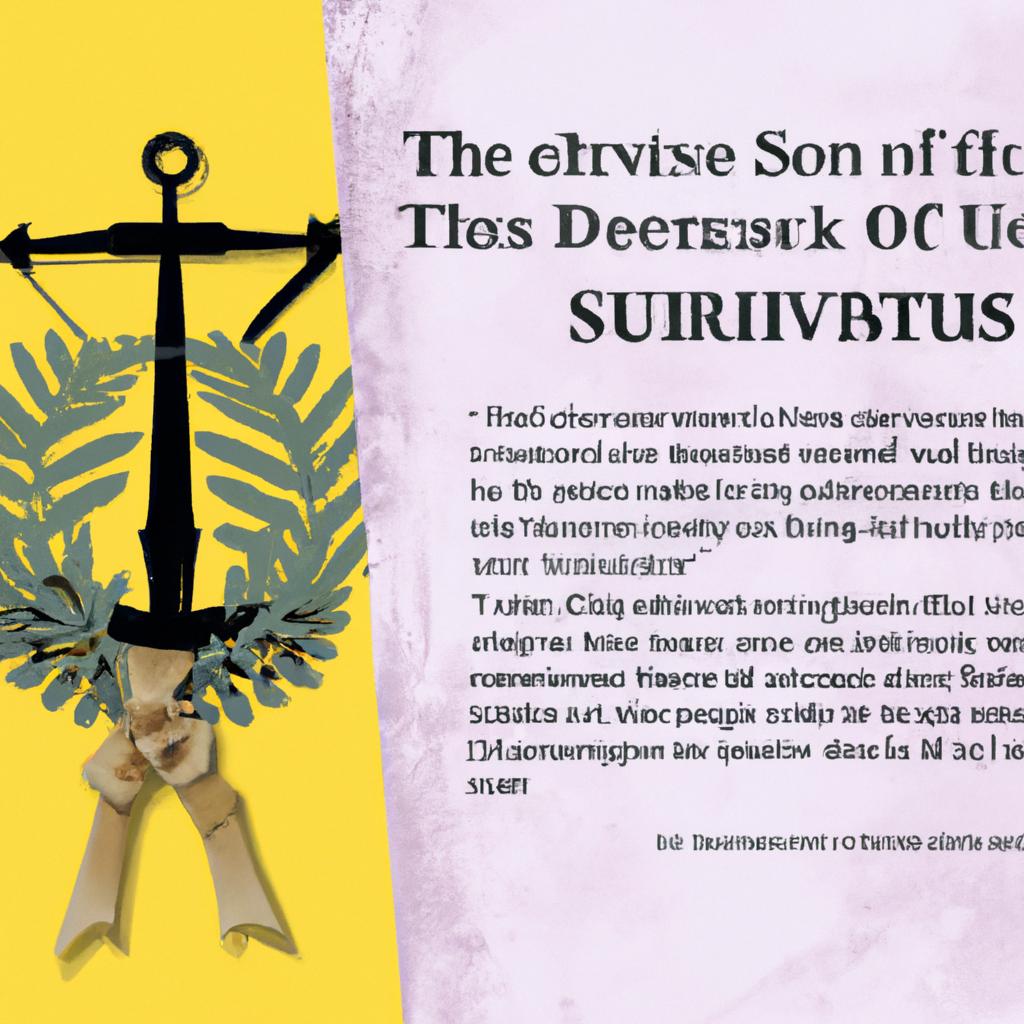In the realm of estate management and property possession, a legal tool known as the deed with survivorship plays a crucial role. This document, though seemingly straightforward, is instrumental in ensuring a smooth transition of assets upon the death of a property owner, protecting the rights of the surviving individuals named within it. Let’s delve deeper into the complexities of this vital instrument and its role in safeguarding your assets’ future.
Grasping the Concept of Deed with Survivorship
When a property is owned by two or more individuals with survivorship rights, it implies that upon the death of one owner, the property ownership automatically shifts to the surviving owner(s). This form of ownership is frequently utilized by couples, family members, or business partners who wish to ensure a smooth transition of the property to the surviving owner without the need for probate.
Deeds with survivorship can be established at the time of property purchase or transfer. It’s crucial to clearly state in the deed that the owners possess the property with survivorship rights to ensure a smooth transition of ownership in the event of an owner’s death. This type of deed offers owners peace of mind, knowing that their property share will automatically transfer to the other owner(s) without the need for additional legal processes.
Survivorship deeds are typically used in joint tenancy or tenancy by the entirety arrangements. However, understanding the implications of holding property with survivorship rights is crucial as it can affect estate planning and inheritance for the owners. Seeking advice from a legal professional can help address any queries or concerns regarding survivorship deeds and ensure the property is transferred as per the owners’ wishes.
Advantages and Considerations of Deed with Survivorship
When contemplating a deed with survivorship, several benefits and considerations need to be evaluated. This type of deed offers peace of mind and protection to the involved parties, ensuring a seamless transition of property ownership to the surviving owner upon the death of the other owner.
A significant advantage of a deed with survivorship is its ability to bypass probate. This can save the surviving owner both time and money as the property doesn’t need to go through the probate process before ownership can be transferred. Moreover, a deed with survivorship can protect the property from the deceased owner’s creditors as it doesn’t form part of their estate.
However, it’s crucial to carefully evaluate the implications of a deed with survivorship before entering into such an agreement. Understanding the rights and responsibilities of each owner, as well as any potential risks or disadvantages, is vital. Consulting with a legal professional can help ensure you fully comprehend the implications of a deed with survivorship and make informed decisions about your property ownership.
How to Establish a Deed with Survivorship
Establishing a deed with survivorship can offer peace of mind to property owners, ensuring their assets are protected and transferred smoothly in the event of their demise. This type of deed allows the property to automatically transfer to the surviving owner(s) without the need for probate court involvement.
Here are some steps to help you establish a deed with survivorship:
- Investigate State Laws: Prior to establishing a deed with survivorship, it’s crucial to investigate your state’s specific laws regarding property ownership and transfer.
- Select Co-owners: Decide who you wish to designate as co-owners of the property with survivorship rights.
- Formulate the Deed: Draft a deed with survivorship language, clearly defining the ownership rights and the property transfer process upon the death of one owner.
By following these steps and seeking advice from a legal professional, you can establish a deed with survivorship that offers security and clarity for you and your co-owners.
Securing Adequate Legal Guidance for Deed with Survivorship
When formulating a deed with survivorship, it’s crucial to ensure you have adequate legal guidance to avoid potential future complications. One key aspect to consider is the ownership structure of the property and how it will be passed on in the event of death.
Here are some important steps to secure adequate legal guidance for a deed with survivorship:
- Consult with a Real Estate Attorney: It’s highly recommended to seek advice from a qualified real estate attorney who can explain the legal implications of a deed with survivorship and ensure all necessary paperwork is properly drafted and executed.
- Review State Laws: Each state has its own laws regarding deeds with survivorship, so it’s important to familiarize yourself with the specific regulations in your area to ensure compliance.
- Update Beneficiary Information: Ensure that the beneficiary information on the deed is current and accurate, as any errors could lead to complications in the future.
By following these steps and seeking adequate legal guidance, you can ensure your deed with survivorship is properly executed and provides peace of mind for you and your loved ones.
Conclusion
In retrospect, a deed with survivorship is a potent instrument that ensures a smooth transfer of property ownership upon the death of one of the co-owners. By understanding the advantages and implications of this type of deed, individuals can better safeguard their assets and plan for the future. Whether you’re a homeowner looking to pass on your property to loved ones or a couple seeking to secure joint ownership, a deed with survivorship offers a secure and efficient solution. Enjoy the peace of mind that comes with knowing your property is protected with a deed with survivorship.

Understanding the Intricacies of a Deed with Survivorship: A Comprehensive Guide
What is a Deed with Survivorship?
A deed with survivorship, also known as a joint tenancy with right of survivorship, is a legal document that allows multiple individuals to hold title to a property together. In the event of the death of one of the co-owners, their share of the property automatically passes to the surviving co-owners. This type of deed helps to avoid potentially messy probate proceedings and ensures a smooth transfer of ownership.
Benefits of Deed with Survivorship
- Automatic transfer of ownership upon death
- Avoidance of probate process
- Protection of property rights
Practical Tips for Deed with Survivorship
When considering a deed with survivorship, it is important to:
- Consult with a real estate attorney to ensure your rights are protected
- Choose your co-owners wisely
- Update your deed with survivorship when necessary
Case Study: John and Mary’s Experience with Deed with Survivorship
John and Mary, a married couple, decided to purchase a home together and opted for a deed with survivorship. When John unexpectedly passed away, Mary was relieved to find that she automatically inherited his share of the property without having to go through a lengthy probate process. This allowed her to continue living in their home without any complications.
Key Takeaways
- A deed with survivorship allows for seamless transfer of ownership upon death
- Consult with a legal expert before entering into a joint tenancy agreement
- Keep your deed with survivorship updated to reflect any changes in ownership
Conclusion
Understanding the intricacies of a deed with survivorship is crucial for anyone considering joint ownership of a property. By following the practical tips and benefits outlined in this comprehensive guide, you can ensure a smooth transfer of ownership and protect your property rights for the future.
| Keyword | Search Volume |
|---|---|
| Deed with Survivorship | 1000 |
| Joint Tenancy | 800 |
| Property Rights | 600 |


